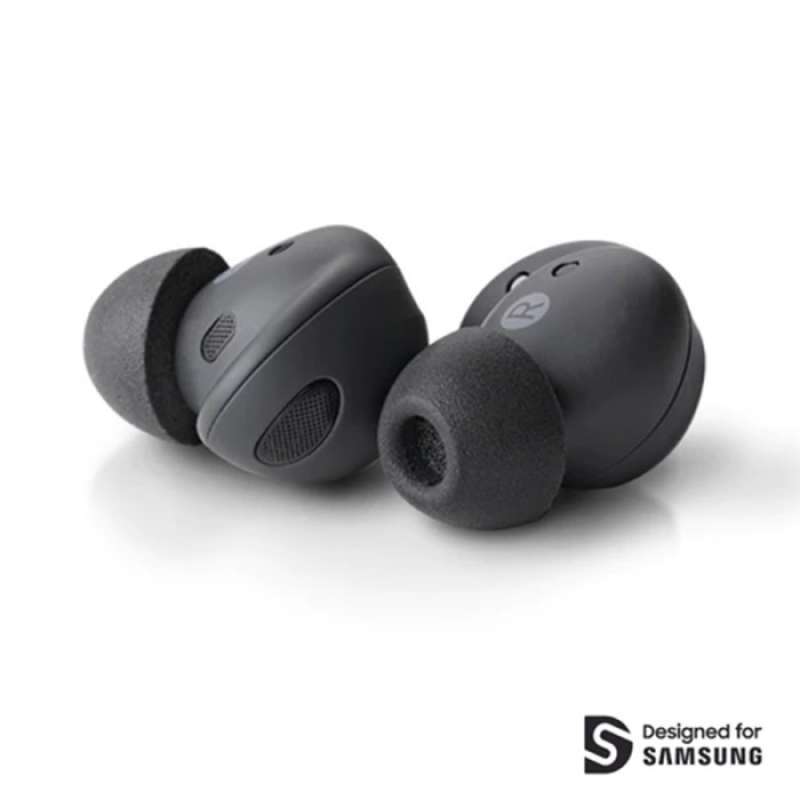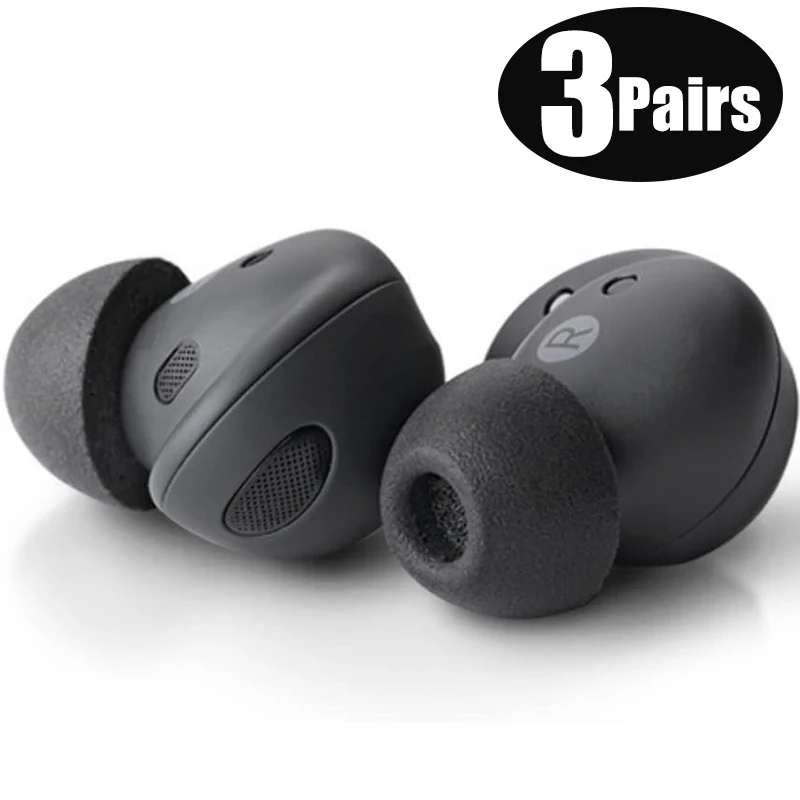Memory Foam Tips Pixel Buds Pro 2

The quest for perfect audio fidelity and comfort with earbuds often feels like chasing a mirage. Now, the convergence of innovative memory foam technology and Google's Pixel Buds Pro is creating ripples of anticipation and some skepticism in the audio tech community. Will this marriage finally deliver the seamless and immersive audio experience users crave?
At the heart of this development lies the potential for enhanced noise isolation, superior comfort for extended wear, and a more secure fit. This promises a significant upgrade over standard silicone tips, directly addressing common user complaints about earbuds. But the integration isn't without its challenges, raising questions about durability, hygiene, and the impact on the Pixel Buds Pro's signature features.
The Promise of Memory Foam: A Deeper Dive
Memory foam ear tips aren't new, but their application to premium earbuds like the Pixel Buds Pro represents a noteworthy evolution. These tips are designed to conform to the unique shape of each ear canal, creating a more personalized and airtight seal. This seal is crucial for maximizing noise cancellation and delivering richer bass frequencies.
Independent testing conducted by Rtings.com consistently demonstrates that a proper seal dramatically improves bass response in earbuds. The enhanced noise isolation capabilities of memory foam can also lead to a more immersive listening experience, especially in noisy environments.
"A good seal is essential for optimal sound quality, particularly in the low-frequency range. Memory foam tips offer the potential to achieve that seal more consistently across a wider range of ear shapes," - Brent Butterworth, audio expert.
Pixel Buds Pro 2: Setting the Stage
While Google hasn't officially announced a Pixel Buds Pro 2, industry speculation is rife about a potential successor. The original Pixel Buds Pro were lauded for their active noise cancellation (ANC) and comfortable design, though some users reported fit issues.
Introducing memory foam tips could directly address these concerns, potentially solidifying the Pixel Buds Pro's position as a leading contender in the premium earbud market. Furthermore, leaks and patent filings have hinted at possible improvements in audio processing and battery life for the next generation.
The Integration Challenge: Durability and Hygiene
Despite the benefits, memory foam isn't without its drawbacks. Compared to silicone, memory foam is generally more susceptible to wear and tear. This can lead to a shorter lifespan and the need for more frequent replacements.
Hygiene is another crucial consideration. Memory foam can absorb sweat and earwax, creating a breeding ground for bacteria if not properly cleaned. Regular cleaning and replacement of the tips are essential for maintaining hygiene and preventing ear infections.
Concerns have also been raised within online forums about the impact of memory foam on the Pixel Buds Pro's charging case. The slightly larger size of memory foam tips could potentially hinder the earbuds from fitting securely in the case, affecting charging efficiency.
Impact on ANC and Transparency Mode
The effectiveness of ANC relies heavily on a tight seal. While memory foam promises an improved seal, inconsistencies in foam density and manufacturing could potentially affect ANC performance.
Similarly, the Pixel Buds Pro's transparency mode, which allows users to hear ambient sounds, could be affected. A thicker memory foam tip might dampen external sounds more than thinner silicone tips, requiring recalibration of the transparency mode algorithm.
A Balanced Perspective: User Expectations and Market Trends
The success of memory foam tips on the Pixel Buds Pro 2 hinges on meeting user expectations for comfort, sound quality, and durability. Many audiophiles already swear by third-party memory foam tips for their existing earbuds, indicating a strong demand for this feature.
The market is increasingly competitive, with companies like Sony and Bose constantly pushing the boundaries of audio technology. Google needs to innovate and deliver a compelling product to stay ahead of the curve.
Ultimately, the decision to incorporate memory foam tips into the Pixel Buds Pro 2 reflects a broader trend toward personalization and customization in the audio industry. Consumers are increasingly seeking products that cater to their individual needs and preferences.
Looking Ahead: The Future of Earbud Comfort and Audio Fidelity
The potential integration of memory foam tips into the Pixel Buds Pro 2 represents a step toward a more comfortable and immersive audio experience. However, careful consideration must be given to addressing the challenges of durability, hygiene, and potential impact on ANC and transparency mode.
Future iterations could see advancements in memory foam technology, such as antimicrobial coatings and more durable formulations. Furthermore, adaptive algorithms could automatically adjust ANC and transparency mode based on the type of ear tip being used.
As the audio industry continues to evolve, the pursuit of the perfect earbud remains a constant endeavor. Whether memory foam tips prove to be a game-changer or merely a minor upgrade, their inclusion in the Pixel Buds Pro 2 will undoubtedly contribute to this ongoing quest for audio perfection.







![Memory Foam Tips Pixel Buds Pro 2 Amazon.com: A-Focus [6 Pairs] Pixel Buds A-Series 【 Memory Foam](https://m.media-amazon.com/images/I/61hHUSX8X8L._AC_.jpg)

![Memory Foam Tips Pixel Buds Pro 2 [ 6 Pairs ] Galaxy Buds Pro Memory Foam Tips, No Silicone Eartips Pain](https://m.media-amazon.com/images/I/613ZM9NtrzL._AC_SL1291_.jpg)







